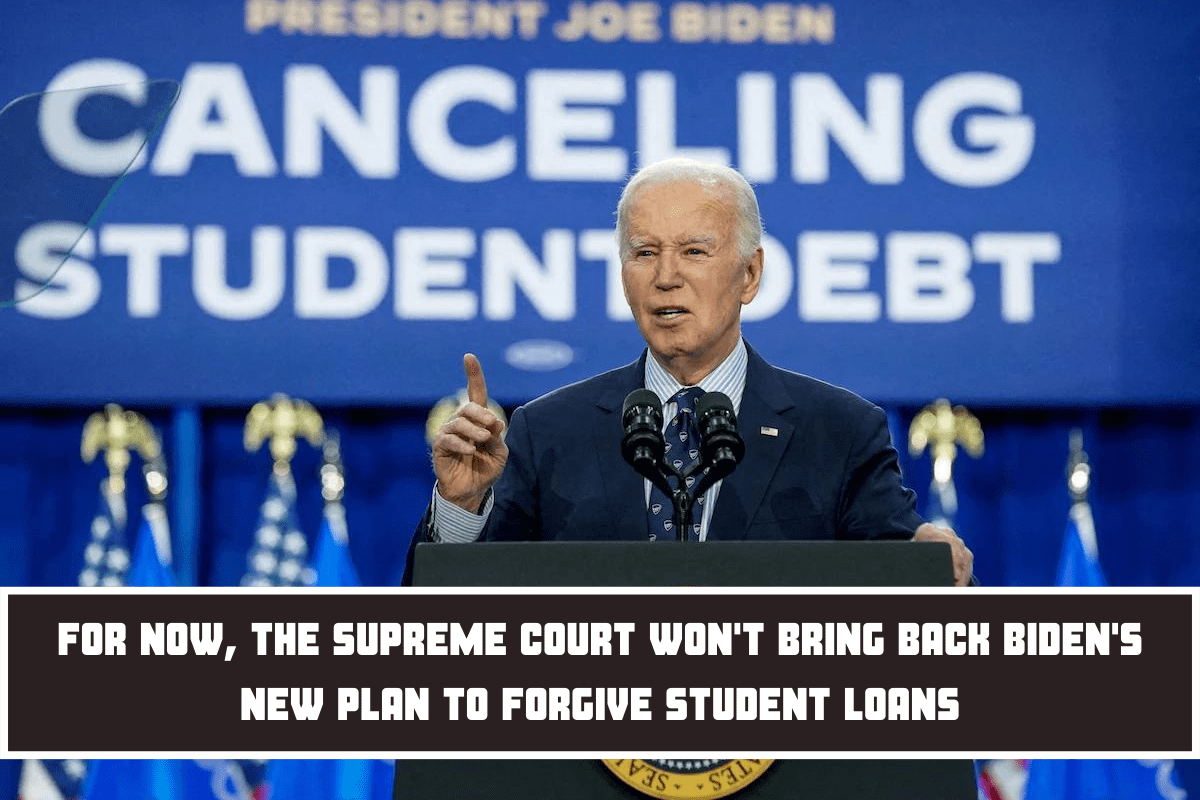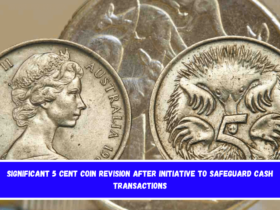Washington, DC — The Supreme Court did not revive the Biden administration’s latest plan to forgive millions of student loans on Wednesday. This means that these people will have to wait until the appeals process is over before their debt can be forgiven.
The Justice Department asked the justices to overturn a broad appeals court order that had stopped the program, called the SAVE plan. More than a dozen GOP-led states have been suing to stop the plan in recent months.
It said in an order that wasn’t signed that it “expects that the Court of Appeals will render its decision with appropriate dispatch.” No disagreements were made known.
The order from the U.S. Court of Appeals for the 8th Circuit keeps the stay in place for now. Because of the ongoing legal processes, the Education Department stopped loan payments for people who signed up for the program earlier this month.
The Supreme Court has not been kind to Mr. Biden’s efforts to help millions of Americans. For example, they threw out a plan last year that would have helped more than 40 million Americans and forgiven nearly $500 billion in loans.
Biden’s student loan forgiveness plan
The newest plan is an income-driven payback plan, which means that the borrower’s monthly loan payments are based on how much money they make. The SAVE plan, which was put in place by the Biden administration in July 2023.
Lowers monthly student loan payments to 5% of a borrower’s discretionary income above 225% of the federal poverty line, up from 150%. It also lets borrowers with smaller starting balances pay off their loans faster and for shorter periods of time. If someone owed less than $12k, for example, they would no longer owe anything after 10 years of payments.
The government said it could make these changes because of the Higher Education Act. They also said that 4.5 million of the 8 million borrowers who signed up for the SAVE Plan have monthly payments of $0. Some parts of the plan went into action at the end of July 2023, and others in January 2024. Other rules were also set to start on July 1.
The Education Department thinks that the SAVE plan will cost around $156 billion over ten years. But some critics say the real cost is $475 billion because they say the Biden administration left out of its calculations $430 billion in debt that it thought would be forgiven by the president’s earlier, larger plan to forgive more loans. The Supreme Court threw out that plan last year because it was based on the 2003 HEROES Act.
A rule outlining these changes was made official in April, but seven states sued Missouri in federal court in April, questioning some of its parts and trying to stop it from being put into effect. Three other states also sued the SAVE plan in federal court in Kansas. They asked the Supreme Court for immediate help after a federal appeals court kept the plan in place for now.
The court turned down the states’ request to overturn the appeals court’s stay in a short, unwritten order. The court pointed out that the states had said they did not need help from the Supreme Court as long as the 8th Circuit’s order was still in place.
In the case of Missouri, a federal district court first said that Missouri had the legal right to sue. It also said that the state had a “fair chance” of proving that the secretary of education went beyond his authority when he shortened the repayment time for people whose original balances were $12,000 or less.
The court said that the states probably wouldn’t win their other cases, but it stopped the SAVE plan from forgiving any more loans.
The Biden administration made a request, but they stopped canceling loans for people who would benefit from having their repayment terms shortened. After 20 or 25 years of payments, the U.S. Court of Appeals for the 8th Circuit issued a broad injunction blocking the SAVE plan and a measure that already existed to forgive debt.
The 8th Circuit’s ruling means that the program can’t be used by borrowers across the country. This goes against the 10th Circuit’s order in the dispute between the three other states, which kept the SAVE plan in place while the case was being heard.
The Biden administration has said that the 8th Circuit’s decision was too broad and that it gave Alaska, South Carolina, and Texas, the three states in the other case, protection that they had been denied by the appeals court in their region.
“The court system is not meant to work this way,” Solicitor General Elizabeth Prelogar wrote to the judges.
This is why Prelogar asked the Supreme Court to overturn the 8th Circuit’s injunction: it “upends the status quo and is inflicting serious harms on millions of Americans.”
She said that over the past year, millions of people who took out student loans got bills that included some of the initiative’s rules.
According to Prelogar, “many borrowers are now experiencing intense confusion because they were told that their payments must be recalculated and that they have been placed in forbearance, which will delay any eventual loan forgiveness.” This is because of the Eighth Circuit’s orders, even though the programs were not challenged by the states.
Borrowers, she said, “would suffer additional harm if they are eventually sent higher bills and told that they can no longer count on the forgiveness that they were promised at the end of their repayment periods.”
The seven states, led by Missouri, said that the Biden administration’s claims were “flawed” and left out a “shocking amount of context.” Republicans in Arkansas, Florida, Georgia, North Dakota, Ohio, and Oklahoma said the Justice Department’s request to overturn the 8th Circuit’s order was “aggressive.”
“From this common text about length that appears in many plans, the secretary claims the power to forgive all student loans,” the states led by the GOP wrote in a filing with the Supreme Court. “Indeed, under the final rule, nearly everybody receives forgiveness.”
The states said that the Biden administration was basically clearing their loans because millions of people will not have to make any monthly payments. The states said the education secretary went too far because the Higher Education Act only allows payback and not forgiveness.
During the 2020 election, Mr. Biden promised to help people with their student loans. Since then, he has started a number of programs to help the 43 million Americans who have a total of $1.7 trillion in student loans.
To date, the Department of Education has cleared the debts of more than 4.7 million Americans, equal to $168 billion. It said that some help has been accepted for one in ten federal borrowers.















Leave a Reply